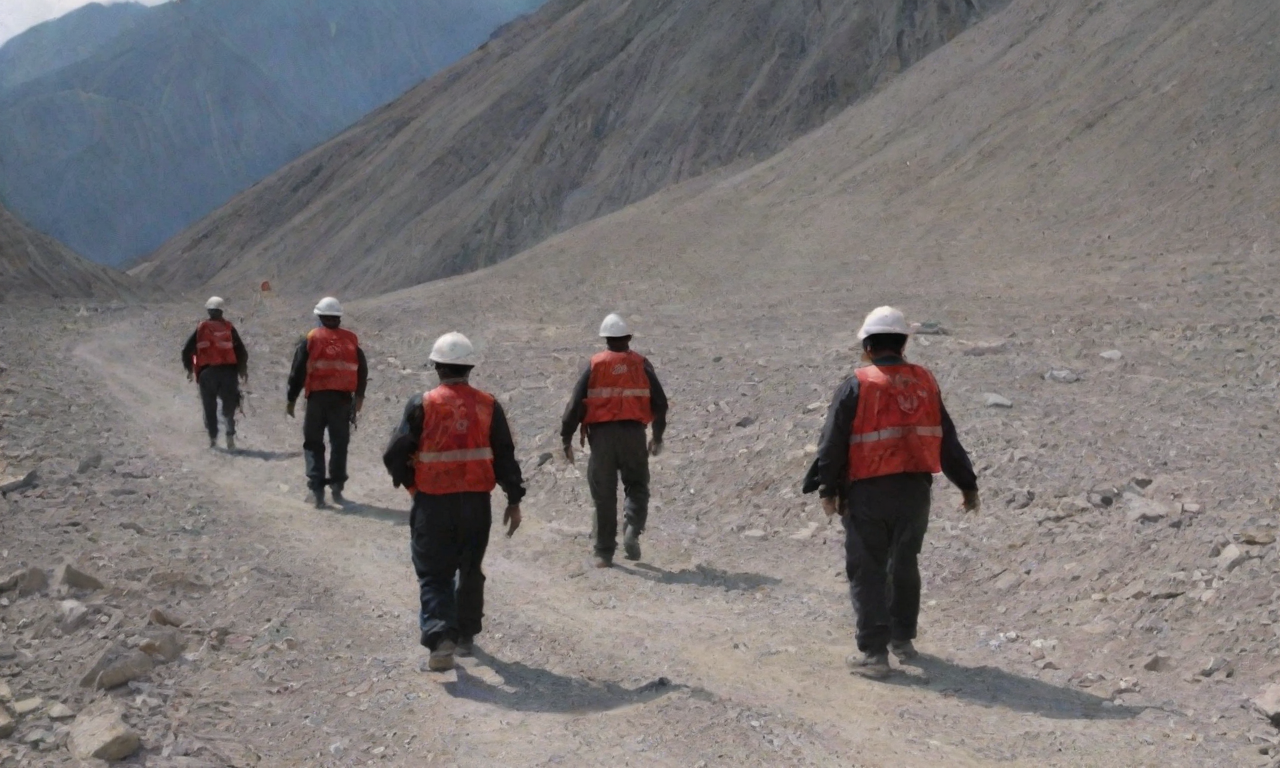"Aside from happiness, there is only happiness." Liu Guangdong, a post-90s generation member, couldn't help but smile when he saw the message in the research group's WeChat that their paper was formally accepted by the journal Nature. In that moment, the anxious struggles of the past few years flashed through his mind, and it was during his lowest that Professor Deng Huiqiu of Hunan University provided heartfelt guidance which pulled him through.
"We've made it through. 2023 is a year of harvest: getting married, having a child. I hope for more simple joys and expectations in 2024." These were the New Year's wishes Liu Guangdong posted on his social circle on the last day of the past year, not expecting them to come true so soon.
On February 29, the research was officially published online, confirming that surface stress-driven reactivity is specific, meaning that there are no two reaction sites in the field of catalysis with exactly the same activity. Deng Huiqiu told China Science Daily, "During the initial review, one of the reviewers recommended that the paper 'could be directly accepted and published in Nature without any modifications,' but it took three years to reach the moment of actual publication."
Deng Huiqiu and Liu Guangdong at the National Supercomputing Center in Changsha. Wang Haohao/Photograph
Building a "Super Magnifier" to Reveal the Truth of Catalysis
The German philosopher Leibniz once said that there are no two identical leaves in the world. This emphasizes the uniqueness among things.
In the field of chemical catalysis, are there two reaction sites with exactly the same activity? Until now, scientists had no answer.
Deng Huiqiu, who has been deeply engaged in the study of the relationship between material microstructure and its properties for over 20 years, naturally paid attention to this question. He prefers to outline research directions and let students explore freely according to their interests. In his second year of master's study in 2017, Liu Guangdong became deeply interested in this area, not expecting to continue his research for over six years.
"Once, while riding a bus, I passed the Sanjiaozui Bridge spanning the Xiang River, which resembles the catalytic reaction curve map that we had studied earlier." At that moment, Liu Guangdong thought it was such a coincidence, but then a new idea sprung to his mind: even though the bridge and the curve map were so similar, they were completely different. Could it be the same with catalytic reactions—that there are no two completely identical reaction sites?
The comparison between the Sanjiaozui Bridge and the surface catalytic reaction curve map developed by the team. Provided by the interviewee
In fact, this hypothesis had already been posited by Deng Huiqiu's team, and now what they needed to do was to experimentally verify this theoretical prediction.
Deng Huiqiu explained that after extensive research, they realized that previous researchers based their observations of catalytic reactions on small systems and models, often only seeing the partial situation or a rough framework, unable to observe the huge differences in activity. Therefore, supported by computational resources from the National Supercomputing Center in Changsha at Hunan University and the Advanced Computation Rosen Center at Purdue University in the United States, the research team calculated the surface stress and surface strain for terraces with widths from 1 nanometer to 10 nanometers. They discovered that stepwise defects can release huge surface stress, driving surface atoms to relax and creating an inhomogeneous strain field that spans a few nanometers, with compressive strain reaching as high as 5.5%. This causes atoms on the terrace with the same local coordination to develop different electronic structures and reactivities, resulting in enhanced specificity of electrochemical oxygen reduction reaction activity.
"10 nanometers is actually very tiny, yet in theoretical models, it's quite large, serving as a 'super magnifying glass' that allows us to see catalytic reactions more clearly," said Deng Huiqiu. Previous studies on small systems and models failed to observe the differences in active sites. By continuously extending and enlarging the system, the team discovered through a series of research that the catalytic activity corresponding to each site is different; the electrochemical oxygen reduction reaction activity of atoms at the edge of a step surface is 50 times higher than that of the atoms in the middle of the terrace.
It took the team over five years to progress from theoretical prediction to experimental validation. Deng Huiqiu mentioned that their research explained the fundamental reason behind the substantial errors produced by the classic discrete active site model in predicting catalytic activities, unraveling the long-standing enigma surrounding the structure sensitivity of active sites and oxygen reduction reactions. This provides a new perspective for understanding catalytic active sites and designing multiphase catalysts, making the prediction and computational design of multiphase catalysts more precise.
The peer reviewers of the paper believe that this study has filled a long-missing link in the fundamental understanding of electrocatalysis, not only demonstrating the importance of spatial variation in strain on step surfaces but also providing a framework to map this behavior.
The low period of not leaving the dormitory and not daring to meet classmates
Deng Huiqiu with some team members. Photo provided by the interviewee.
Liu Guangdong comes from a rural family in Hengyang, Hunan, "Typically, direct PhD or combined Master-PhD programs take about 5 to 6 years. I first did a Master's for 3 years, and then spent another 4 years on my PhD." Liu Guangdong reflected on his experiences during the time he was about to graduate with his doctorate two years ago.
Scientific research is a continuous process of raising and solving problems. From his second year as a master's student to his PhD, Liu Guangdong's research on surface stress-driven reaction activities gradually deepened, yet the key results had not been achieved by the time he was set to graduate. "At that time, many of my classmates had published papers, some had graduated and found jobs, and only my thesis was still undecided. Three reviewers were appointed to assess it initially. One reviewer said, 'The paper can be accepted for publication in Nature without any modifications,' but the other two had different opinions, suggesting that the paper still required major revisions."
The pressure of his studies and some external factors made Liu Guangdong increasingly anxious. At that time, he had been in a long-distance relationship with his girlfriend for over three years, with both families pressuring them to marry, and Liu Guangdong, still without a job, had little savings. During that period, he did not dare to leave the dormitory or see classmates, spending all day in the dormitory busy with his thesis, "sleeping poorly, eating poorly, with acne on his face and sores in his mouth."
Although he considered giving up at times, Liu Guangdong could not bear to abandon the research he had persisted in for so long.
Deng Huiqiu has a habit; after arriving at work, he goes directly to the laboratory to understand what new problems the students are facing and what new requests they have, so they don't linger too long over a tough issue. There was a time when Deng Huiqiu noticed that Liu Guangdong hadn't been to the lab for several days, so he pulled him aside to have a heart-to-heart in the office.
"Everyone has gone through it; I deeply empathize with Guangdong's pressure. Even though our research group provides higher subsidies for master's and doctoral students, it is still a drop in the bucket for a young person who has yet to work and start a family," Deng Huiqiu said. He invited Liu Guangdong to dine and chat multiple times, gradually guiding him.
"I laid out several life choices for him, including continuing with research, or graduating and becoming a teacher to educate others," recalled Deng Huiqiu. "But I also kept telling him that if you have dreams and aspirations, you must persevere, especially in scientific research."
Under his teacher's guidance, Liu Guangdong calmed his emotions and re-engaged in scientific research. His paper was finally accepted for publication by "Nature," which was a great relief for Guangdong. "I'm glad I chose to persevere. Although the paper went through three major revisions over three years, I believe that persistence is the key to victory." With feedback from reviewers and revisions from collaborators, the paper underwent more than a hundred changes, looking completely different from its original draft to the published version.
After graduating, Liu Guangdong remained in his original research group to continue his postdoctoral research work. Now, he has gained new insight into scientific research and ideas for future research directions. "If you are struggling with whether to do scientific research or which field to pursue, please do your homework; choosing the right mentor and platform is vital."
"All of my PhD students are willing to stay on as postdocs,"
In academic circles, it's common for many PhD graduates not to stay in their original research group for postdoctoral research, but to move to other universities or research institutions instead. Some view staying in the original group as an extended version of a PhD, while others believe that a change of scenery could provide new perspectives and resources.
"All my PhD students are willing to stay on and continue with postdoctoral research," says Deng Huiqiu. His team currently includes over fifty members, such as young teachers, postdocs, doctoral students, and master's students.
When it comes to cultivating a research team, Deng Huiqiu has his own methods. The first is to fully support students in undertaking significant scientific research that aligns with national needs.
"As long as the students have reasonable needs, I will give them my full support," believes Deng Huiqiu. He recognizes that each student has different interests and abilities. Some are suited for free exploration, and Deng allows them to research according to their interests, providing guidance without setting fixed research tasks; for others, he collaborates to develop detailed research plans and specific tasks. Liu Guangdong is one such student who chose his research direction independently and explored freely.
Deng Huiqiu reveals that, in fact, this published research achievement did not have specific project funding supporting it. "The research went on for several years, funds were tight, and international cooperation provided significant support, exemplifying a win-win collaboration," he shares.
Once students have a certain research foundation, Deng Huiqiu actively recommends them for domestic and international exchanges and cooperation. "This is actually a display of powerful collaboration. I don't seek quantity in exchanges and cooperation, but the collaborating party must be stronger than us in certain aspects, allowing students to learn from stronger teams, which helps the student and the entire team to progress faster."
"I'm already a veteran in scientific research, ready to leave more opportunities for the younger generation," Deng Huiqiu told China Science Daily. Zeng Zhenhua, one of the corresponding authors of the paper recently published, was his former master's student.
Deng Huiqiu has long called for a "strong lead, strong follow" approach within his team: "During their studies, I fully support my students and hope that when they graduate and have better development and a bigger platform, they will come back to help their junior brothers and sisters. This is also a kind of reciprocal act." Zeng Zhenhua is now a scholar at Purdue University, and this research was initiated in collaboration with the team.
"Under such a virtuous cycle, more and more students like Zeng Zhenhua and Liu Guangdong are growing up. I look forward to them achieving new scientific results on their research path," said Deng Huiqiu.
Related paper information: https://doi.org/10.1038/s41586-024-07090-z








